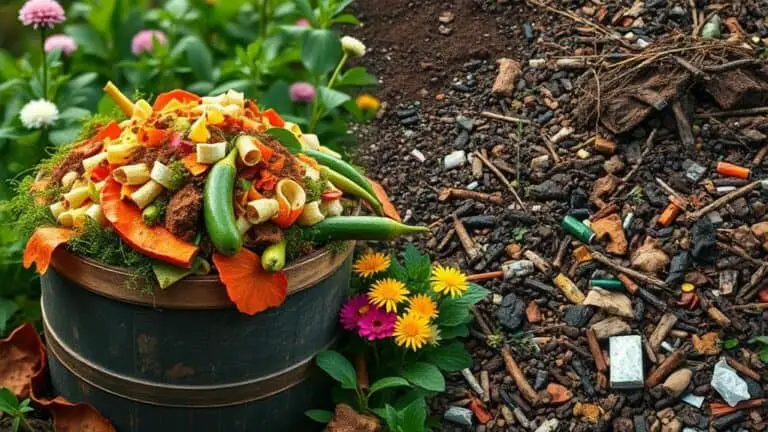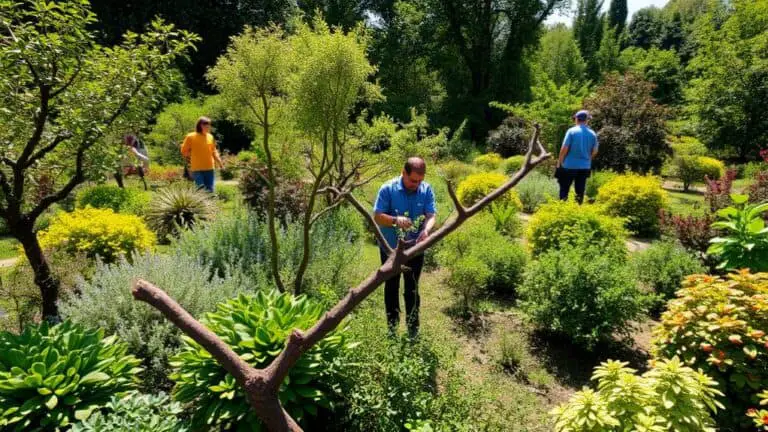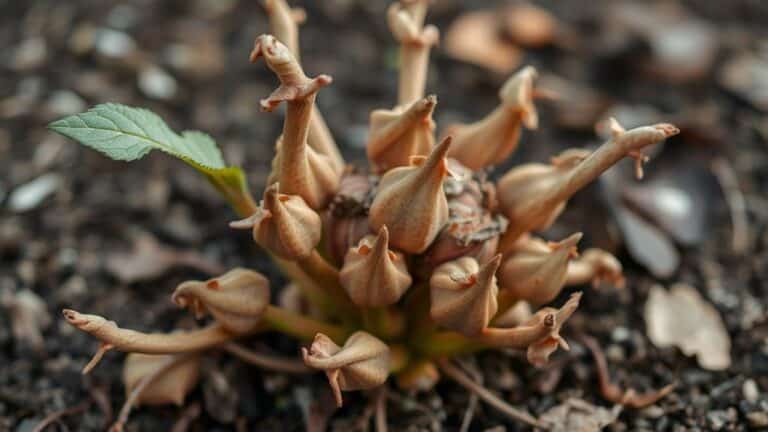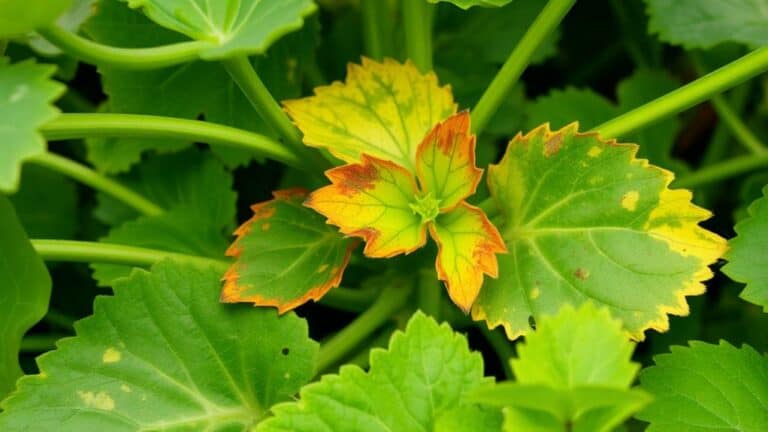Vegetables That Will Grow In A Shady Garden
If you're dealing with a garden that doesn't get much sunlight, you might think growing vegetables is out of the question. However, several varieties thrive in shady conditions, making it entirely possible to have a productive garden. For instance, leafy greens like spinach, kale, and arugula require minimal light and even benefit from cooler temperatures. But that's just the beginning—root vegetables and certain vining crops also flourish with limited sunlight. Curious about how to make the most of your shady garden? Let's explore which vegetables can turn your low-light space into a lush, productive oasis.
Understanding Shade Conditions

When planning a shady garden, understanding different types of shade is essential for selecting the right crops. Shade conditions vary, and knowing the differences helps you choose wisely.
Partial shade means your garden gets some sunlight but not all day. Light shade allows dappled light, which is perfect for many plants. Morning shade can be beneficial, giving gentler light, while afternoon shade provides cooler conditions.
Leafy greens, for example, thrive in these settings, as they benefit from slower bolting and prolonged harvests. Seasonal changes also affect shade patterns, so it's important to track them.
Leafy Greens for Shade
Leafy greens like spinach, kale, and lettuce are perfect for your shady garden, needing just 3-4 hours of sunlight each day.
You'll find spinach grows quickly in the shade, reducing bitterness and bolting, while kale thrives in cooler, shaded spots, giving you a steady supply of leaves even after frost.
Plus, arugula, Swiss chard, and mustard greens all benefit from partial shade, offering continuous harvests and vibrant flavors.
Best Shade-Tolerant Varieties
Growing leafy greens in a shaded garden doesn't just guarantee a bountiful harvest; it also enhances the flavor and longevity of your plants. Spinach, kale, arugula, and Swiss chard are some of the best shade-tolerant vegetables you can grow. They only need 3-4 hours of sunlight daily to thrive. Spinach grows faster in shade, reducing bitterness and bolting. Kale, being a biennial, can produce leaves from early spring to late fall. Arugula loves loose, compost-rich soil and stays tender in shade. Swiss chard not only tolerates shade well but adds vibrant color to your garden.
| Vegetable | Characteristics |
|---|---|
| Spinach | Fast growth, less bitter, 28-55 days |
| Kale | Biennial, abundant leaves, cool tolerant |
| Arugula | Prefers shade, tender leaves, 2-3 inches |
| Swiss Chard | Vibrant color, continuous harvest |
These leafy greens will thrive in shady spots, ensuring a delicious and productive garden.
Benefits of Partial Shade
Partial shade offers numerous benefits for growing leafy greens, making it an excellent choice for gardeners with less sunny spaces.
Leafy greens like lettuce, spinach, and arugula thrive with just 3-4 hours of sunlight daily, which helps prevent bolting and extends the harvest season. Growing in partial shade also means these greens grow faster and taste less bitter.
Plus, shade-tolerant vegetables like spinach and kale can keep producing well into fall and winter, extending your growing season.
Here are three benefits of partial shade for your leafy greens:
- Longer harvest season: Enjoy fresh greens for a more extended period.
- Better taste: Less bitterness due to cooler growing conditions.
- Sustainable gardening: Grow a variety of greens, even in shaded areas.
Root Vegetables in Low Light
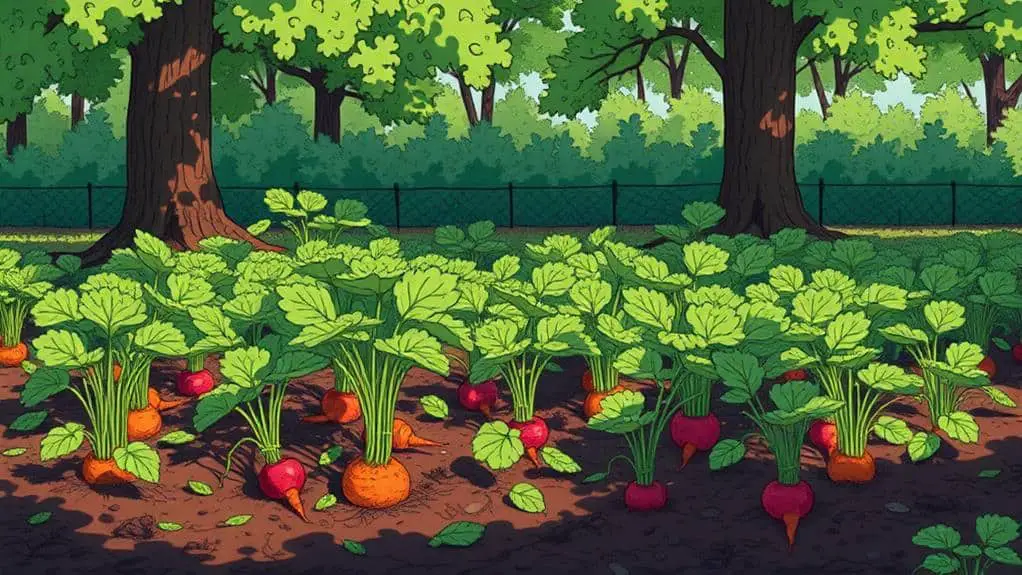
Root vegetables like beets, carrots, and radishes can flourish even in low light conditions, needing just 4-5 hours of sunlight each day for ideal growth.
These root crops are perfect for shaded gardens. Shade helps prevent radishes from bolting, making them harvest-ready in just 3-4 weeks. Beets can be picked within 7-9 weeks.
Carrots, grown in low light, become sweeter and less bitter, reaching peak size in 70-80 days. Consistent watering is essential for these vegetables to thrive and avoid bolting.
Make sure your garden has loose, well-drained, compost-rich soil for the best results. Root vegetables are an excellent choice for shaded areas, providing a rewarding harvest with minimal sunlight requirements.
Vining Crops in Partial Shade
Growing vining crops like cucumbers and pole beans in partial shade is a great way to make the most of your garden space.
By using trellises, you can help these plants reach more sunlight while also improving air circulation to prevent diseases.
Plus, training these vines vertically not only helps them grow better but also makes your garden look more attractive.
Optimizing Vertical Space
Although a shady garden might seem limiting, you can still make the most of your space by optimizing vertical growth with vining crops.
Cucumbers, squash, pole beans, and runner beans can be trellised to maximize sun exposure and yield. Peas, especially vining varieties, thrive in partial shade and produce sweet pods while climbing supports.
Training these crops upward saves ground space and improves air circulation, reducing disease risk.
Here's how to make the most of vertical space:
- Use Trellises: These structures help vining crops reach sunlight.
- Choose Partial Shade Crops: Pick crops that tolerate less light.
- Ensure Good Airflow: Vertical growth improves air circulation, keeping plants healthy.
Light Access Strategies
In a shaded garden, vining crops like cucumbers, squash, and pole beans can be your best allies for maximizing light access. By training these plants to grow upwards using trellises, you can help them reach sunnier areas, increasing their light exposure even in partial shade.
Vining crops like peas thrive in these conditions and offer the added benefit of improving soil health by fixing nitrogen. Vertical gardening with trellises not only optimizes space but also boosts airflow, reducing the risk of disease.
Remember to harvest regularly to encourage continuous growth, which is especially important in shaded environments. With these strategies, you'll make the most of your garden's light and space, ensuring a productive and healthy harvest.
Herbs for Shady Gardens
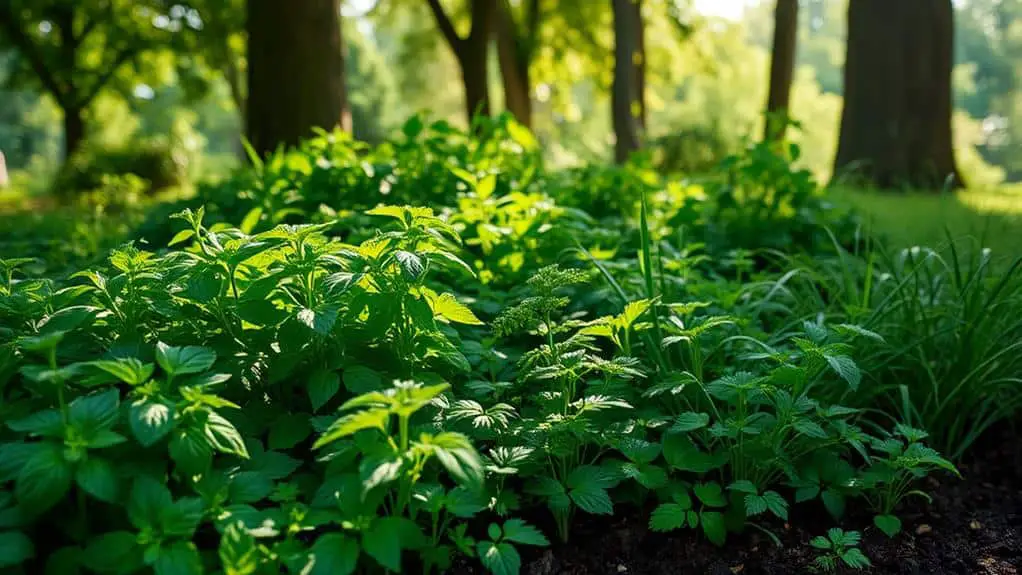
Transforming a shady garden into a thriving herb haven isn't as challenging as you might think. Many herbs thrive in partial shade, needing just 4 hours of sunlight daily.
Here are some top choices:
- Cilantro: Perfect for partial shade, cilantro's flavor stays intact in cooler spots, preventing it from bolting in warm weather.
- Mint: This herb loves shaded areas and is great for culinary uses. Plus, it's easy to control in containers.
- Parsley: Highly adaptable, parsley grows well in partial shade and various soils, making it versatile for any garden.
Brassicas in Partial Sun
Brassicas, including broccoli, cauliflower, and brussels sprouts, are excellent choices for gardens with partial sunlight.
These brassica vegetables thrive when they receive about 4-6 hours of sunlight daily. Shaded garden areas provide the cooler temperatures brassicas love, which helps them grow sweeter and form tighter heads.
Partial sun can also extend your growing season, allowing for a second, smaller crop after the main harvest. These resilient plants tolerate less light, making them perfect for spring and fall planting.
Regularly harvesting the heads encourages continuous production and helps prevent flowering, which happens if they get too much heat or direct sunlight.
Shade-Tolerant Salad Greens
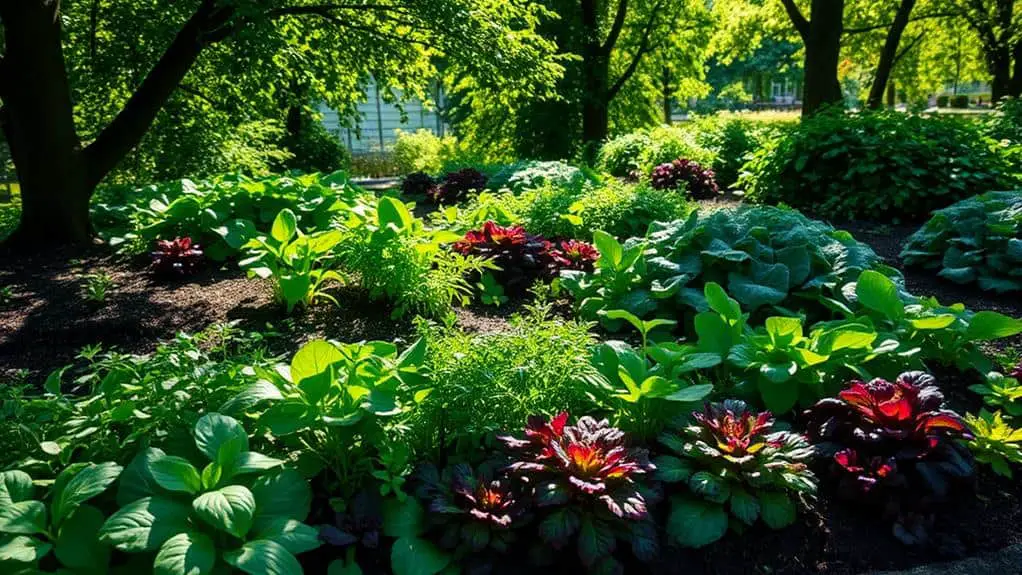
Many salad greens, like arugula, lettuce, and spinach, are well-suited for gardens with limited sunlight. These shade-tolerant leafy greens thrive with just 3-4 hours of sunlight daily, making them perfect for your shaded garden.
- Arugula: Benefits from shade as it prevents bitterness. Harvest when leaves are 2-3 inches long for the best flavor.
- Lettuce: Varieties like Iceberg, Romaine, and Butterhead grow well in cooler conditions and are ready for harvest in about 50 days.
- Spinach: Grows faster in shade, reducing bolting and bitterness. Prefers compost-rich, well-drained soil and can be harvested in as little as 28 days.
These greens are easy to grow, providing delicious and fresh salad ingredients for your table.
Growing Peas and Beans
Peas and beans are perfect for your shady garden since they need just 4-5 hours of sunlight daily to thrive.
For the best results, choose vining varieties like sugar snap peas and pole beans, and use trellises to help them reach sunnier spots.
Regularly picking peas will keep them producing, ensuring you enjoy fresh vegetables throughout the growing season.
Ideal Light Conditions
Cultivating peas and beans in shaded areas can be incredibly rewarding, provided they get about 4-5 hours of direct sunlight daily.
These vegetables grow well in partial shade, making them ideal choices for a shade garden. Here are three reasons why you should consider growing these crops:
- Cooler Temperatures: Shaded spots help prevent heat stress, prolonging the growing season.
- Continuous Production: Regular harvesting encourages ongoing growth, guaranteeing a steady supply of fresh produce.
- Support Structures: Trellises maximize light exposure, helping your plants thrive.
When you choose to grow in the shade, remember that peas and beans are resilient and can flourish with the right care.
Best Pea Varieties
Thriving in shaded gardens, certain pea varieties like Sugar Snap, Snow Peas, and Shelling Peas offer both resilience and flavor.
These peas need just 4-5 hours of sunlight daily, making them perfect for shaded areas. Cooler temperatures prevent heat stress and enhance sweetness, so peas thrive in your shady spots.
Plant the seeds 1-2 inches deep and space them about 2 inches apart. Supporting climbing varieties with trellises helps maximize space and light.
Regular harvesting is essential. It encourages continuous production, meaning more delicious peas for you!
With proper care, your shaded garden will yield tasty, tender peas all season. Don't worry; you've got this! Just follow these tips, and enjoy your garden's bounty.
Harvesting Tips
You've mastered selecting the best pea varieties for your shaded garden, so let's move on to harvesting tips for both peas and beans.
To guarantee a bountiful harvest, follow these straightforward guidelines:
- Regular Harvesting: Pick peas every few days once they start maturing. This encourages more production.
- Soil Moisture: Keep the soil consistently moist. Shaded areas can retain moisture better, but regular watering is still essential.
- Support Structures: Use trellises for climbing varieties of peas and beans. This maximizes growth and makes harvesting easier.
Always plant peas in early spring or late summer to avoid heat stress, which helps maintain their sweetness.
With these tips, you'll have a thriving pea and bean garden even in shaded areas!
Fruit Crops for Shade

Finding fruit crops that can flourish in shaded gardens might seem challenging, but several varieties adapt well to limited sunlight.
Shade-tolerant options like currants, elderberries, gooseberries, and hardy kiwi vines can thrive with minimal sunlight.
You'll find that choke cherries grow well in partial shade, adding beauty and deliciousness to your garden.
Pawpaw trees are another great choice, though they do best with more sun.
These fruit crops not only grow in shade but also offer diverse flavors and nutritional benefits.
Incorporating these edible plants into your garden enhances biodiversity and aesthetics.
Vertical Gardening Techniques
Maximizing your shaded garden's potential often involves employing vertical gardening techniques. By doing this, you can help vining crops like cucumbers, squash, and beans access sunlight even in shady areas.
Training plants to grow vertically optimizes light exposure and improves air circulation, reducing disease risk. You can use trellises and supports to guide your crops upward, making the most of your space.
Here's how vertical gardening helps:
- Better light exposure: Vining crops can reach sunlight more effectively.
- Improved air circulation: Reduces disease and promotes plant health.
- Enhanced garden design: Adds beauty with hanging planters and wall-mounted systems.
Using these techniques, you'll create a thriving garden, even in limited sunlight!
Frequently Asked Questions
What Vegetables Can Grow in Full Shade?
You can grow leafy greens, root vegetables, and microgreens in full shade. Spinach, lettuce, beets, radishes, parsley, and cilantro all exhibit excellent shade tolerance. Garden planning for shady areas guarantees a bountiful harvest despite low light.
What Vegetable Needs the Least Amount of Sunlight?
For the least sunlight, choose leafy greens like lettuce, spinach, and arugula. They thrive with minimal sunlight, showing excellent shade tolerance. Ideal for garden planning and container gardening, these root vegetables adapt well to low-light conditions.
Can Cucumbers Grow in Shade?
Yes, cucumbers can grow in shade. Choose shade-tolerant cucumber varieties like 'Marketmore 76.' Guarantee proper soil moisture and consider companion planting to optimize growth patterns. Trellising helps them reach more light and improves yield.
What Can I Grow in My Shady Yard?
You can grow low light crops like spinach, lettuce, and chives. For shade gardening tips, use container gardening ideas and companion planting strategies. Make certain proper soil preparation techniques for the best results in your shady yard.
Conclusion
You've got all the tools to create a thriving shady garden! Remember, leafy greens, root vegetables, and vining crops can all flourish with just a bit of sunlight. Don't forget to try herbs and shade-tolerant salad greens too. With a little planning and care, your garden will be bursting with fresh produce. Stay patient, water regularly, and enjoy the process. Happy gardening, and may your shady garden bring you plenty of delicious harvests!



